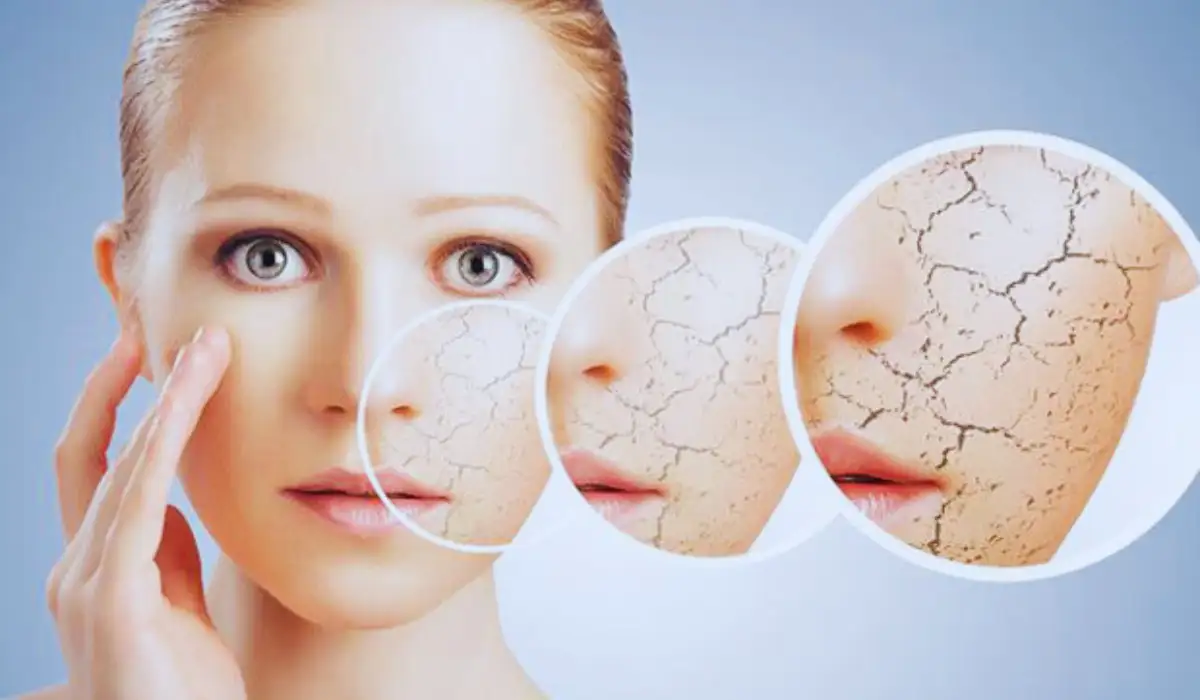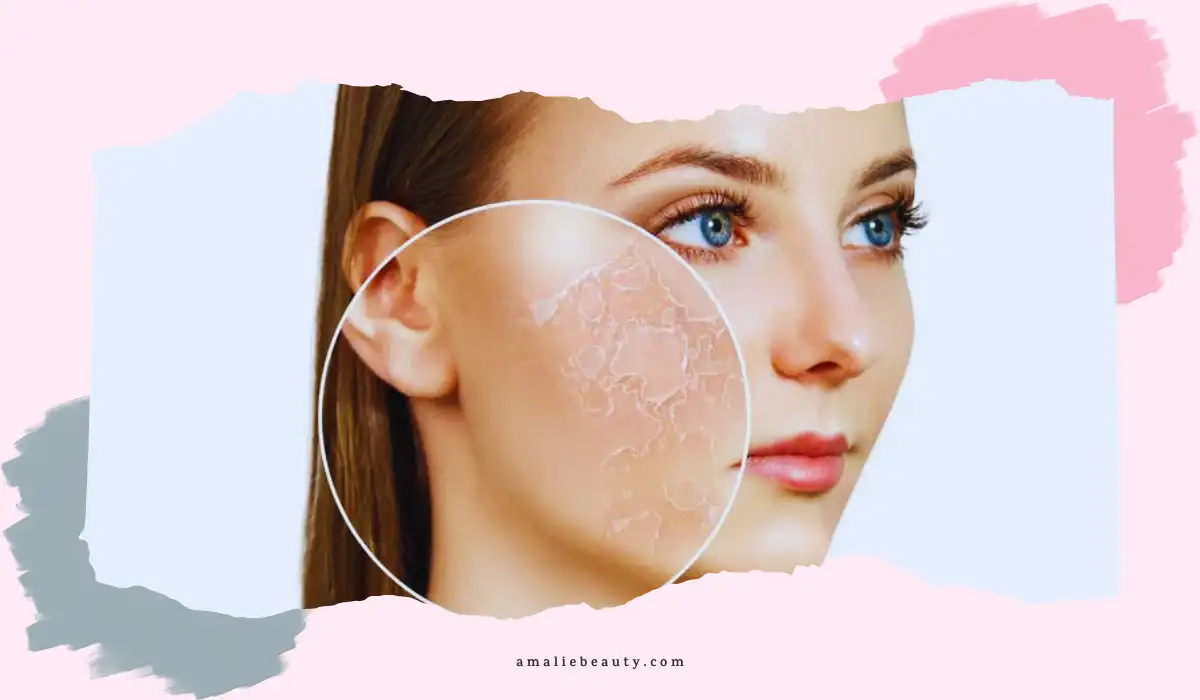Xerosis is skin dryness. Although it is often presented as a trivial problem, chronic dry skin can cause discomfort and irritation accompanied by different complications.
This article seeks to give a thorough review of xerosis including the causes signs and treatment procedures.
Through a better understanding of this condition, people can deal with and relieve the difficulties that dry skin inevitably poses.
Causes of Xerosis

The first major causes of xerosis are environmental factors. When the skin dries and hardens due to dryness it lacks moisture which causes dehydration.
Symmetrically low levels of humidity promote water loss from the skin’s surface. Besides environmental factors, internal ones like age also have a remarkable impact. With the process of aging the skin produces low oil naturally and becomes more fragile.
The other frequent cause of xerosis is the use of harsh cleansers. Harsh soaps and detergents can strip oil from the skin which damages its natural barrier function leading to dryness.
Secondly, some medical conditions can also worsen dry skin. It is therefore critical to address causes such as eczema, psoriasis, and hypothyroidism since xerosis may occur secondary to managing the skin condition appropriately.
Symptoms of Xerosis
Knowing the signs of xerosis plays an important role in early intervention. The first sign is chronic itching that can range from mild to severe and may disrupt everyday life.
Other forms of presentation may include flakiness and scaling which make the skin look rough as well as uneven.
In cases that are more serious redness and swelling might appear especially if the skin is irritated before scratching. These include cracks and fine lines which make the skin vulnerable to infections.
One of the effects is itching which can be considered a hallmark for xerosis. The body responds with itching and people start the rhythm of scratching that only makes things worse.
It is critical to disrupt this itch-scratch loop to treat and prevent xerosis complications.
Dryness and scaling result from the loss of moisture-retaining capacity by the stratum corneum layer.
This leads to the elimination of dead cells on the skin as flakes contribute to a rough texture.
Xerosis may have redness and inflammation, especially with increasing scratching. Redness shows that the irritated skin requires urgent attention and specific medication.
The appearance of cracks and fine lines in the skin particularly regions where dryness is common are not merely a cosmetic issue.
Such breaches in the skin barrier give pathways to bacteria leading to increased susceptibility to receiving infections.
Xerosis control is not limited to treating the obvious manifestations but strengthening the skin’s natural barrier against outer pathogens.
Treatment of Xerosis
Managing xerosis necessitates a holistic approach that considers both external and internal aspects responsible for dry skin.
➡️ Hydrating Skin Care Routine
It is therefore crucial that people with xerosis establish a consistent skincare routine. The regimen should have mild cleansers that do not remove the skin of natural oils.
Choosing hyaluronic and glycerin or shea butter-based moisturizers is ideal for replenishing lost moisture.
The application of the moisturizer right after bathing when the skin is slightly damp increases its absorption rate which ensures proper hydrating effect.
➡️ Humidifiers
Using humidifiers in indoor environments presents significant advantages for people with xerosis.
These humidifiers help in adding moisture to the air thus helping reduce excessive loss of water through sweating.
In areas where winters are rough or humidity levels low the use of a humidifier results in an atmosphere more friendly to the skin.
➡️ Avoiding Harsh Products
It is essential to choose soft soaps and refrain from using products with aggressive chemicals in order not to make drying worse.
Aggressive cleansers can damage the skin barrier which makes xerosis worse. Choosing fragrance-free hypoallergenic products can reduce the chances of skin reactions.
➡️ Topical Treatments
Topical treatments prescribed by dermatologists may be required for those with moderate to severe xerosis.
Some of these treatments include active ingredients like urea or lactic acid that serve as exfoliants and moisturizers for the skin.
With repeated use of these creams or ointments, one can achieve a balance in the skin and relief from symptoms.
➡️ Stay Hydrated
Hydration is important to skin health. Although surface hydration depends on external moisturizers, internal hydration is just as critical.
Thanks to correct water consumption the body is fully hydrated; thus positive changes on the skin are observed.
➡️ Nutritional Considerations
It is fundamental to guarantee a balanced diet that contains healthy fatty acids, vitamins, and minerals for skin health.
Foods rich in omega-3 fatty acids like fish flax seeds and walnuts are beneficial for the skin hydration process and may reduce xerosis symptoms.
Conclusion
To summarize xerosis or dry skin is a common condition that occurs because of different causes and has various symptoms.
Understanding the complexities of this dermatological issue gives people an opportunity to take active measures to control and avoid further episodes.
A comprehensive approach to skincare routine environment change and even medical treatment in case it is required may vastly enhance the living standards for those suffering from xerosis.
A dermatologist offers a more individualized approach catering to specific skin requirements and underlying illnesses.
By identifying and implementing appropriate strategies people can not only get rid of the pain caused by dry skin but also ensure lifelong healthy skin.
References
- Reszke,R., Pełka, D., Walasek, A., Machaj, Z., & Reich, A. (2015,September), Skin disorders in elderly subjects [Abstract]. International Journal of Dermatology, 54(9)
https://www.ncbi.nlm.nih.gov/pubmed/26148310 - National Institute on Aging. Skin Care and Aging (https://www.nia.nih.gov/health/skin-care-and-aging).

